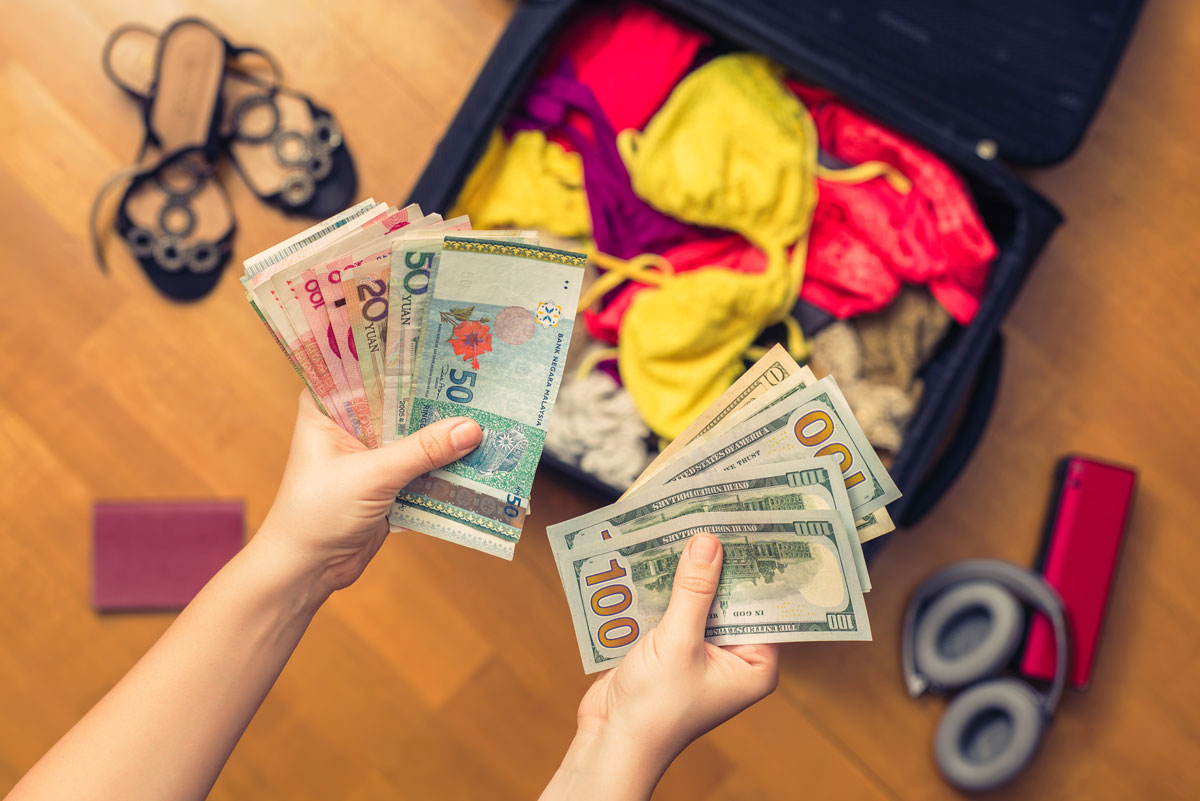- Don’t travel on borrowed money.
- Create a travel budget.
- Set up an automatic travel fund savings account.
- Track your spending.
- Pay off your credit cards.
- Get a rewards credit card.
- Change your living situation.
- Sell your things.
- Adjust lifestyle and mindset.
- Stop eating out.
- Cut entertainment costs.
- Reduce expensive hobbies.
- Find free activities to engage in.
- Maintain a positive outlook.
It’s no surprise that most people want to travel more, but how do you save money for travel and still live a full life at home? The other day I read something online that most millennials are willing to give up Tim Hortons, Netflix, shopping & hockey to travel. So what would you give up to save up to travel the world?
Ways to Save Money for Travel
Before Dave and I became full-time travel bloggers, we had full-time jobs, mortgage payments, and bills to face each month. This was not how we wanted to live our lives. We didn’t love our jobs, and we were constantly feeling behind. However, we knew we wanted to travel more.
Dave and I had already traveled extensively for nearly a decade before we decided to become bloggers. We had visited 40 countries while juggling our careers and life in Canada. Our months abroad between jobs fueled our desire to make travel a full-time career.
Many friends and family thought we were flaky and wasting money on travel. The reality was, we never once dipped into our savings. We didn’t want to risk financial ruin to follow our dreams, so we focused on saving more money to use for travel.
1. Don’t Travel on Borrowed Money
Our primary rule is to never travel on borrowed money. While this may not align with typical millennial thinking, trust us—returning home to a mound of debt after a transformative travel experience is overwhelming. Avoiding debt leads to a happier life.
We never departed until we were certain that our monthly bills, investments, and expenses were covered for the duration of our trip. If we lacked sufficient funds, we would adjust our travel plans accordingly.
2. Create a Travel Budget
We found that creating a detailed budget is vital for saving for travel. Answering the following questions can help clarify your financial needs:
How Much Should You Be Saving for Travel?
- What will your daily travel budget be?
- How much will you spend on accommodations nightly?
- What is your meal allowance?
- What budget do you have for excursions?
- How long are you traveling for?
- Will you adopt a budget or mid-range travel style?
For instance, if you’re traveling in South East Asia, budgeting $50-$100 a day might be reasonable. This means you’d need $10k-$20k for a six-month trip, excluding flights.
3. Set Up an Automatic Travel Fund
Once you determine how much you need, consider setting up an automatic withdrawal into a dedicated travel savings fund. Treat it like any other essential monthly expense.
4. Track Spending
Understanding your spending habits is crucial. Pay close attention to where your money goes when budgeting for travel. For example, small daily purchases can add up significantly over time.
Consider your recurring subscriptions and memberships. Perhaps you can downsize or eliminate unnecessary expenses to increase your savings.
5. Pay off Your Credit Cards
Paying off credit cards fully each month is essential. Paying interest can drain resources meant for travel. Utilize your credit card strictly to track expenses effectively, ensuring that you pay it off regularly.
6. Get a Rewards Credit Card
Travel rewards credit cards can be beneficial in covering costly flight expenses. If used responsibly, they can help you accumulate points quickly through everyday purchases.
7. Change Your Living Situation
If homeownership feels restrictive, consider selling your house. Alternatively, find a subletter while you travel. Renting out your property can generate income to fund your adventures.
8. Sell Your Things
We hosted a garage sale to declutter, yielding several thousand dollars from unwanted items. Online platforms like Kijiji or Facebook Marketplace are also great for selling items.
9. Lifestyle Change and Mindset
Scrutinizing your lifestyle can reveal opportunities to save. Reducing the number of vehicles you own, for example, can lead to substantial savings.
10. Stop Eating Out
Transitioning to home-cooked meals can drastically reduce expenses. By buying fresh ingredients in bulk, you’ll save money while enjoying delicious meals at home.
11. Cut Entertainment Costs
Consider hosting gatherings at home instead of going out. This approach allows you to remain social while staying aligned with your financial goals.
12. Cut Expensive Hobbies
Evaluate your hobbies for cost-saving opportunities. Trade expensive pastimes for more affordable options that you still enjoy, thereby saving money for travel.
13. Find Free Activities to Enjoy
Engage in outdoor adventures, community events, or use local parks to enjoy recreational activities without overspending.
14. Think Positive
While it may seem challenging, saving money for travel is achievable with persistence. Break your goals into manageable tasks and gradually implement these savings strategies.
Final Thought
Whenever we take a chance and make room for our dreams, positive outcomes often follow. If you’re feeling stuck, consider rethinking your approach to life and making adjustments. The journey toward achieving your travel goals begins with the first step.
Travel Planning Resources
Looking to plan your next trip? Consider using trusted resources.
Book Your Flights: Start your trip by finding the best flight deals on Skyscanner.
Book your Hotel: Utilize providers like Booking.com for Europe or TripAdvisor for other locations.
Find Apartment Rentals: Score competitive prices on apartment rentals through VRBO.
Travel Insurance: Don’t forget this essential; we recommend:
- Safety Wing – For occasional travelers.
- Medjet – Global air medical transport and travel security.
Book Your Activities: For tours and ticket bookings, we suggest Get Your Guide.





